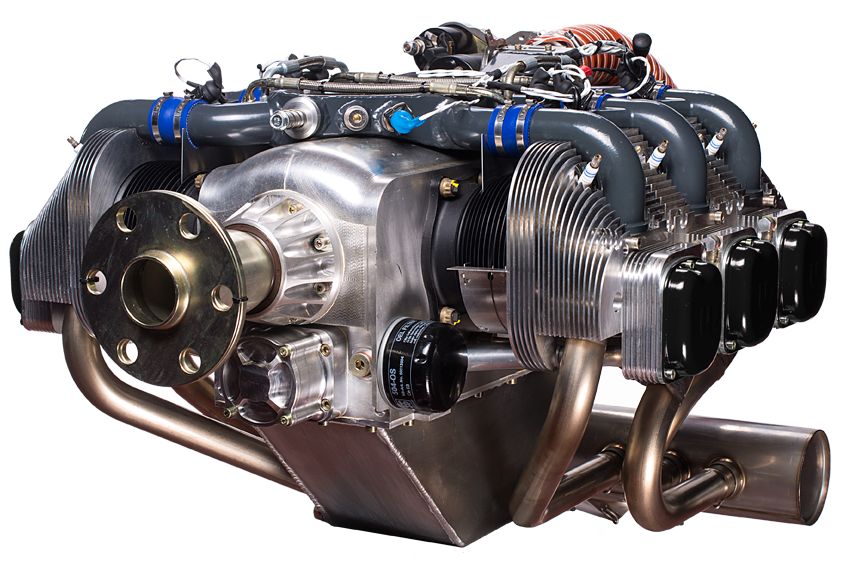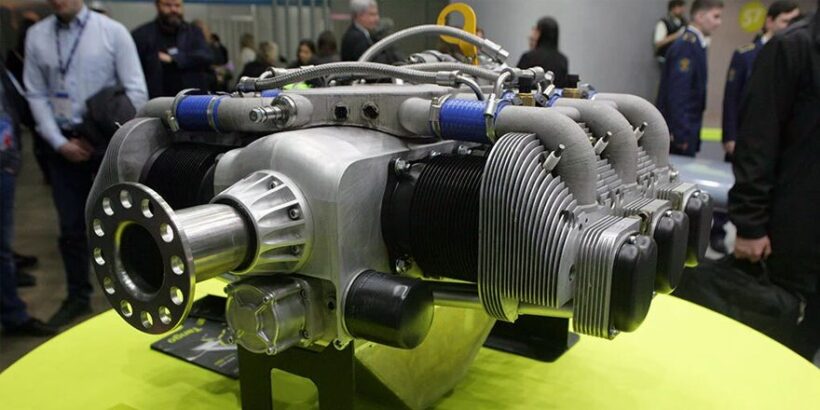In the summer of 2025, S7 Group plans to undertake a series of tests on its new APD-520 “Leader” piston aircraft engine, developed by engineers from its in-house design bureau. Serial production of this engine is scheduled to begin in 2026, according to the Russian business newspaper Vedomosti.
A spokesperson for S7 Group stated that at least 30 engines will be produced in the first year. They will equip the Tango, a four-seat light aircraft also developed within the group. Serial production of the Tango aircraft is expected in late 2026 to early 2027.
—
▌Technical Features of the APD-520
The APD-520 is based on a conventional six-cylinder, air-cooled internal combustion engine design. Russian composite materials are employed in its construction to reduce weight and enhance durability. The engine delivers 147 kW (200 hp) with a displacement of 5.2 litres. Its baseline time between overhauls (TBO) is 1,500 hours, with a potential increase to 2,000 hours as testing advances.
Manufacturing will take place at S7 Group’s own production facilities, although investment figures have not been disclosed.
—
▌The Tango Aircraft: A Platform for the New Engine
The light aircraft Tango has been under development since 2023 by Spectra Aircraft, a design bureau within S7 Group. It is intended primarily as a training aircraft for aspiring civilian pilots and for private passenger transport. The aircraft features a fully composite airframe, a maximum takeoff weight of approximately 1,200 kilograms, a top speed of 240 kilometres per hour, and a range of up to 1,100 kilometres.
The first Tango prototype completed its maiden flight on 21 September 2024 near Torbeevo, Moscow region. It was powered by a Belgian UL Power UL520is engine, whose design the APD-520 largely replicates. This reverse engineering approach reduces development time and costs while ensuring component compatibility and technical conformity.

▌Domestic Development of Aviation Engines in Russia
Besides S7 Group, other Russian research centres are advancing piston aircraft engine development. Since the late 2010s, the Central Institute of Aviation Motors (CIAM) has been working on the APD-500 engine, delivering around 220 hp. This six-cylinder, air-cooled engine has a displacement close to 5 litres and a baseline TBO of 1,500 hours with the prospect of extending to 2,000 hours.
The APD-500 demonstrator, rated at 500 hp, underwent ground testing installed on a Yak-18T aircraft. In 2022, its variant, the APD-A, intended for light aerobatic aircraft, was tested on a Yak-52 flying testbed. Flight trials are expected to conclude by the mid-2020s, with serial production planned for 2025–2026.
In 2023, CIAM analysed APD-A test results and developed an upgraded demonstrator, the APD-A-V2, capable of up to 650 hp. This engine, equipped with a 2.6-metre diameter propeller, successfully passed bench tests simulating aerobatic stresses. Testing was conducted at the Siberian Aeronautical Research Institute (SibNIA) in Novosibirsk, using a Yak-52 flying testbed.
—
▌Prospects and Significance for Russian Aviation
These developments have shaped the design of the promising FORA-500 piston engine, on which technical specifications are being drafted for a range of aviation engines with diverse applications. Collaborative efforts by CIAM, the Central Scientific Research Automobile and Automotive Engines Institute (NAMI), and SibNIA aim to produce indigenous powerplants capable of replacing imported units in training and light aviation.
The Russian light aviation market has long struggled with regulatory challenges and dependence on imported components. Recently, especially in light of international sanctions, import substitution has become a strategic priority. Developing domestic piston engines and light aircraft ensures the industry’s independence, supports pilot training, and fosters regional air connectivity, particularly in remote areas of Siberia and the Far North.
—
▌Conclusion
Projects such as the APD-520 and Tango are important not only for Russia but also contribute to the global aviation industry by broadening the range of technical solutions and promoting the growth of light aviation worldwide, making it more accessible and reliable.


